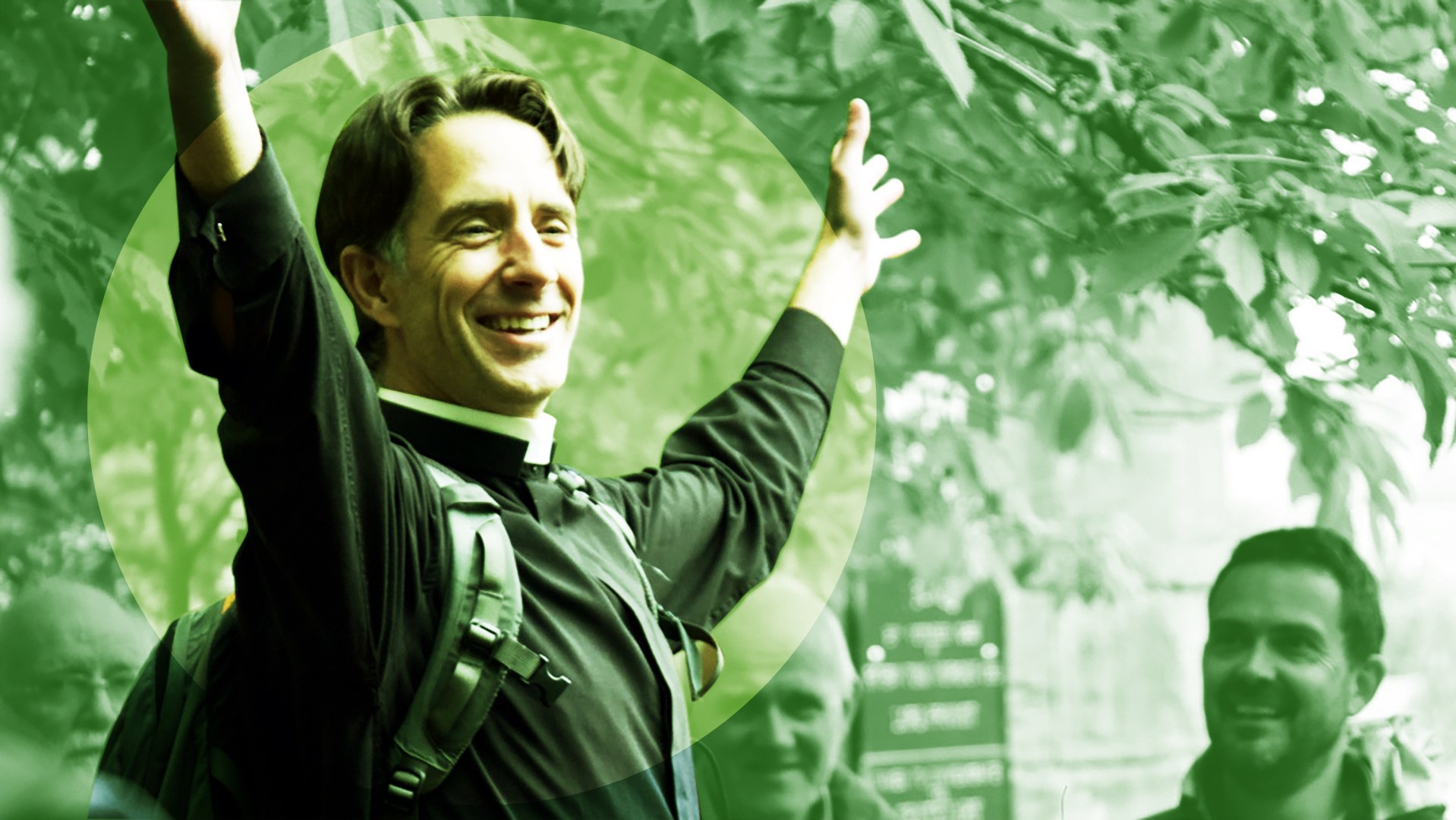While working as a pastor in rural Scotland some years ago, Matt Canlis produced the film Godspeed along with his brother Brian Canlis and friend Danny Lund. The film explores Christian spirituality and the pace at which many of us live. “The only problem,” Canlis says, “was when people watched it and thought, ‘There is greener grass in Scotland, let’s just move over there.’”
For Canlis, it’s critical that Christians “bloom where we are planted” and develop a deep spirituality in our own context. “So I conceived of a pilgrimage in your own backyard—a book that helps you be found where you already are,” he explains.
That book is the recently released Backyard Pilgrim: 40 Days at Godspeed. CT connected with Canlis to talk about how “blooming where we’re planted” takes on particular significance during the COVID-19 pandemic.
As many now find themselves confined to their own homes, yards, and neighborhoods, how has Backyard Pilgrim taken on new meaning?
I initially conceived of this as a pilgrimage in your own backyard—a book that helps you be found where you already are. But it is not just a book to read—it is a book that guides you on a walk. Over 40 days, readers follow two paths. One is the Bible path, which explores Scripture passages from Genesis all the way up to Jesus.
The other is the parish path, which involves walking in your community for 15 minutes a day. Another important piece of it is daily saying “Here I am” to God in prayer. Prior to the pandemic, we gathered in pilgrim groups once a week to say, “Here we are.” The idea was to regularly both say, “Here I am as a child of God,” and together, “Here we are as God’s children.”
But now most of my congregation is housebound. None of us imagined how Backyard Pilgrim would be God’s gift to keep us connected during the virus. The daily rhythm of saying “Here I am” to God in prayer, Bible reading, and walking our own neighborhoods has kept all of us on the same page. We are both embracing the new boundaries and learning to thrive within these limits. Almost daily, small groups in my congregation are FaceTiming each other to share their favorite verses from Backyard Pilgrim and to tell stories from their parish walks.
Many in our town are feeling isolated and alone. That said, our church family is actually feeling more in touch with God, our neighborhoods, and our neighbors’ needs than ever before. This is certainly a Lent like no other, and we will keep walking through to Easter and beyond.
You’ve been getting feedback from churches in the US and Canada, thanking you for the “backyard pilgrimage” model.
When I wrote the book, I had no idea of the circumstances it would be released under. While we hoped people would get to meet in person, here’s what’s happening instead. People are on the same page every day, checking in daily with each other, and talking about what they’re seeing out on their walks. Our congregants are also meeting weekly for a Zoom conference.Having a book where people are on the same page for 40 days has been to a gift to the isolated, those in nursing homes, for example, a gift to first responders, and a gift to our own congregation.
Backyard Pilgrim is structured around a fundamental human question: Where are you? You write, “It is first a question you can ask God but also a question God will ask you.” Why grapple with this question?
The value in questions is they always open up discussion and exploration, and they allow for the Holy Spirit to give particular answers that different people need to hear. There are certainly universal answers that apply to all of us, but there are also questions that we each need to answer in different ways. So a question like, “Where are you?” is a question meant to make us realize we are embodied persons and that we live in a particular place. “Where are you?” is a geographical question that is linked to identity—you can’t separate who you are from where you are.
The notion that where you are is part of who you are is a pretty countercultural idea when we consider how transient our society has become.
Exactly. I realize it’s a tourist generation and we like to be on the move. But “Where are you?” is a deliberately geographical question—and it’s God’s first question, connected to land and place and people.
In the book, you explore how the question “Where are you?” and the answer “Here I am” echo throughout the Bible, beginning in Genesis. As you began to trace this question-and-answer paring throughout Scripture, what did you notice?
God’s first question is a searching question. Not a question just to search our souls but to search for us, to find us, to say, I know you’re getting lost, let me help you be found. In studying the part in Genesis where God says, “Where are you?” I noticed God was walking in the garden, but the human beings were hiding behind a tree. Instead of saying “Here I am,” they hid, then started blaming each other and blaming God for what was happening.
It’s so different from when I’d play hide and seek with my daughter. Whenever I’d walk into the same place that she always hid and say “Where are you?” she would rip open the curtains and say, “Here I am! Here I am!” She loved being found.
In Genesis, not only have Adam and Eve fallen into sin, they’ve also been poisoned such that they don’t want to be found. God obviously knows where they are, but in asking the question, he is trying to get them to own where they are, what they’re doing, and who they are.
Readers of Backyard Pilgrim are asked to walk through their neighborhood or community every day. Why is it so important to you that people do more than just read the book—that they respond by getting outside in their neighborhood daily?
If we are to be found, it has to be in the places where we live. This is not about an individual encounter with an abstract God. This is the God who made heaven and earth, the one who is saying, Come and see the world I have made. Come and see the suffering. Come and see how I can make you a child in this world, both in this life and in the life that is to come. There is no abstract way to practice being found. It has to happen in a place.
And instead of just saying “Here I am”—which you do every day as an individual—I’m also hoping people say “Here we are” as they gather remotely in smaller pilgrim groups once a week. Back in the day, pilgrims did not travel alone. There were bandits and hard things to get through, so you traveled in groups. But it wasn’t just for protection—it was because community transforms. In our church, we’ve been gathering for one hour each week to say, Here we are together. When groups gather, they tell one story from their parish walk, they tell what their favorite verse was, and then they also share one question that’s been arising from the text that they’re wrestling with.
During this pandemic, how do you care pastorally for your congregants?
People call me. I listen to each congregant, I pray through that voicemail, and then I call each person back. My hours are spent visiting people via phone calls. We have 160 people in our church, and I will talk with each one who calls me.
We are doing everything we can to love our neighbors as ourselves, which sometimes means giving space, and other times means visiting homes to drop off home cooked meals, extra toilet paper, or walking people’s dogs for them. These are trying times with many uncertainties, but one thing remains certain: We are being the resilient body of Christ!







